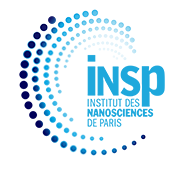Testing quantum electrodynamics in extreme fields using helium-like uranium
Résumé
Quantum electrodynamics (QED), the quantum field theory that describes the interaction between light and matter, is commonly regarded as the best-tested quantum theory in modern physics. However, this claim is mostly based on extremely precise studies performed in the domain of relatively low field strengths and light atoms and ions. In the realm of very strong electromagnetic fields such as in the heaviest highly charged ions (with nuclear charge Z ≫ 1), QED calculations enter a qualitatively different, non-perturbative regime. Yet, the corresponding experimental studies are very challenging, and theoretical predictions are only partially tested. Here we present an experiment sensitive to higher-order QED effects and electron–electron interactions in the high-Z regime. This is achieved by using a multi-reference method based on Doppler-tuned X-ray emission from stored relativistic uranium ions with different charge states. The energy of the 1s1/2 2p3/2 J = 2 → 1s1/2 2s1/2 J = 1 intrashell transition in the heaviest two-electron ion (U90+) is obtained with an accuracy of 37 ppm. Furthermore, a comparison of uranium ions with different numbers of bound electrons enables us to disentangle and to test separately the one-electron higher-order QED effects and the bound electron–electron interaction terms without the uncertainty related to the nuclear radius. Moreover, our experimental result can discriminate between several state-of-the-art theoretical approaches and provides an important benchmark for calculations in the strong-field domain.
Domaines
Physique Atomique [physics.atom-ph]| Origine | Publication financée par une institution |
|---|

